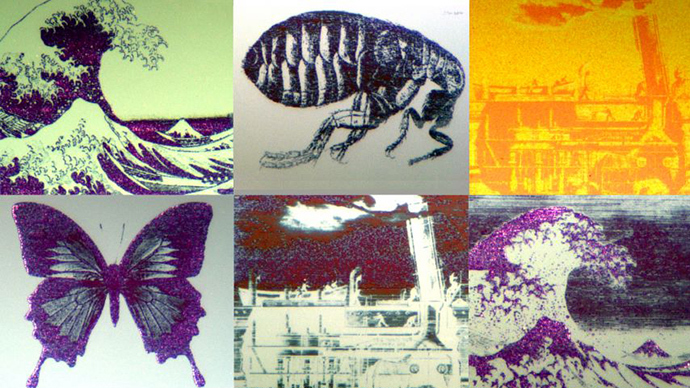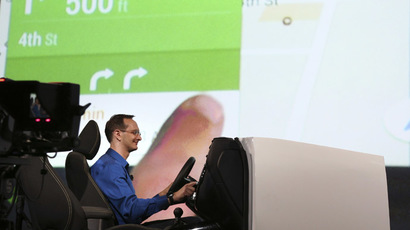Aha! New type of ultra-thin HD display discovered by chance

Scientists studying a special phase change material, with the potential to be used as non-volatile computer memory, realized they can instead make ultra-thin energy efficient high-resolution displays out of it.
The discovery that promises a cheaper alternative to organic light diodes currently used for high-end mobile devices was made by an Oxford University team. They were studying the alloy Ge2Sb2Te5 (Germanium-Antimony-Tellurium or GST), a material that can change from a liquid to a crystalline state and back by laser pulses of different intensity in a matter of nanoseconds. The property enables the use of the material to store digital information, with crystalline and amorphous dots representing ones and zeroes.
But the team found another application for GST. Different phases of the material have different optical properties. If the alloy is sandwiched between transparent electrodes, a current may be used to switch the phase states instead of a laser. Depending on the thickness of the bottom electrode layer, the color of the dot may be set, so the technology allows for making pixels.
Importantly, both the thickness of the device and the size of the GST dot can be very small. The team experimented with “nano-pixels” just 300 by 300 nanometers in size. Therefore GST displays can have very high pixel density, meaning a large number of pixels can be packed into a given space.
“Because the layers that make up our devices can be deposited as thin films, they can be incorporated into very thin flexible materials – we have already demonstrated that the technique works on flexible Mylar sheets around 200 nanometres thick,” said Professor Harish Bhaskaran, who led the research reported in Nature magazine.
Apple's Retina Display, used in the iPhone 5, packs 326 pixels per inch or 128 pixels per cm. With pixels of hundreds of nanometers the density can be two orders of magnitude higher, closer to what digital camera sensors have. The researchers predict that the technology can be used to make artificial retinas, and not just in lightweight mobile devices.
Another benefit of the technology is that GST remains in the state it was set without power. So researchers say it can be as energy efficient as e-paper when displaying static pictures, and save power while displaying video by refreshing only the pixels that actually change in the image.
“Along with many other researchers around the world, we have been looking into the use of these GST materials for memory applications for many years, but no one before thought of combining their electrical and optical functionality to provide entirely new kinds of non-volatile, high-resolution, electronic color displays – so our work is a real breakthrough,” said the study’s co-author, Professor David Wright.
The research is still in the early stages, but the team has filed a patent through the university's commercialization company and is talking to investors and display producers to get an assessment of their discovery.














